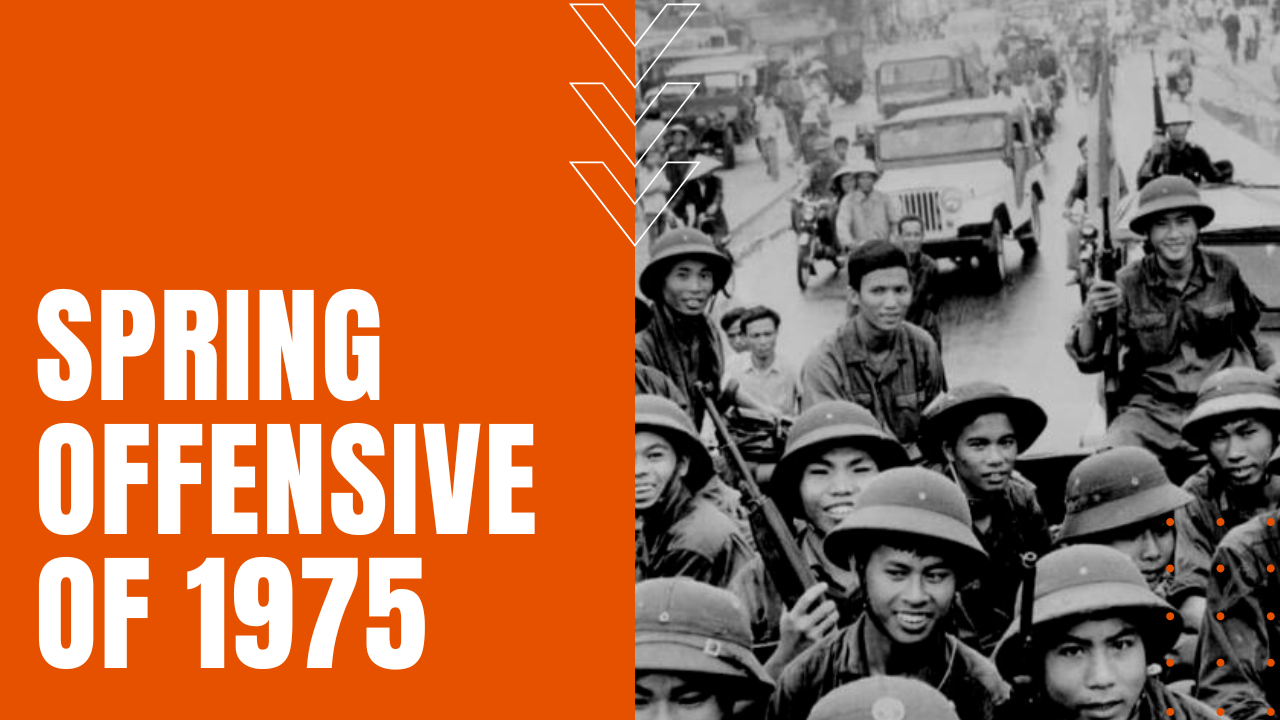Spring Offensive of 1975: Vietnam War Approaches End

PAVN Forces Push South
Known in the Communist North as the Ho Chi Minh Campaign, the People’s Army of Vietnam or PAVN began their spring offensive into the South on March the 10th, 1975, capturing the key Central Highland city of Buôn Ma Thuột by March 18th, in a preemptive push south in advance of a second offensive planned for early 1976.
Instead, American and South Vietnamese military leaders quickly ascertained that they were no longer capable of defending the entirety of South Vietnam, leading to a pullback from the Central Highlands that caused civilian refugees to come under fire as they fled a lone highway toward the coast. From a combatant’s standpoint, a well-led and aggressive PAVN took advantage of the South’s failing command and control, leading to the all-out rout and destruction of the majority of South Vietnamese forces in the Highlands.
ARVN Forces Retreat
In response to the pullback and rout, the United States forces sat on their hands. As the South’s Army of the Republic of Vietnam or ARVN devolved into a disorderly and panicked withdrawal, they abandoned Kontum and Pleiku as they fled deeper south, leading the North Vietnamese to press their attack from the west and the north, capturing Quang Tri, Hue and Da Nang in a rapid succession of coastal offensives.
Caught off guard by the ARVN’s unexpected collapse, North Vietnamese military leaders transferred the bulk of its northern troops more than 350 miles to the south, in an all-out push to win the war in time for a posthumous celebration of Ho Chi Minh’s birthday.
In response, splintered South Vietnamese forces regrouped in defense of the capital, despite a near-total collapse of political and military will from top South Vietnamese leaders. After North Vietnamese forces captured Tan Son Nhat airport on April 28th, a day later, the order came down to evacuate American nationals and South Vietnamese sympathizers, who were airlifted from the walled American Embassy compound to the American aircraft carriers Hancock and Midway, waiting some 40 miles offshore, ferried by a dedicated task force of some 80 American helicopters.
On April 30th, as the last U.S. Marines took to the rooftop of the embassy in hopes of their own Hail Mary evacuation, North Vietnamese tanks and troop carriers stormed into the city, leading to the Fall of Saigon, and a long overdue end to the Vietnam War.
